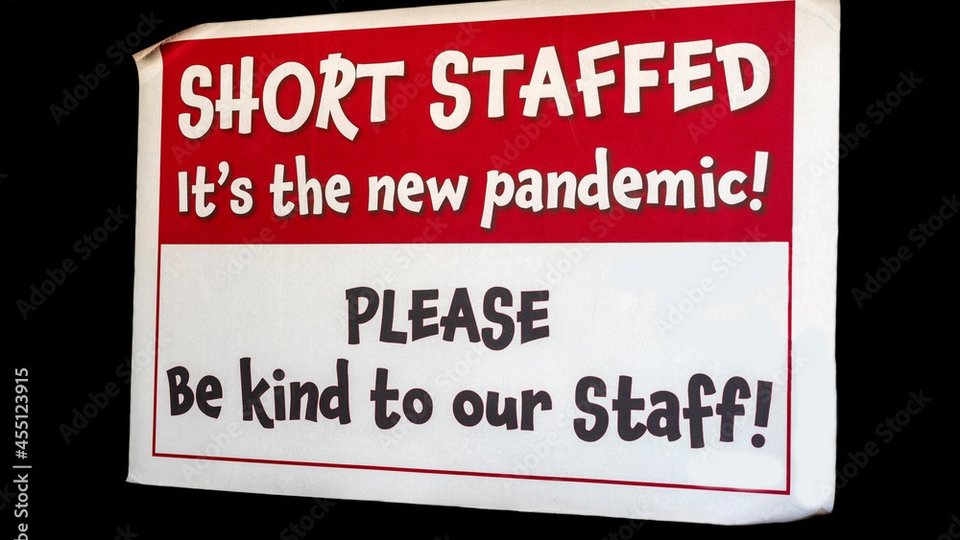Technology
Leaving your labor woes in 2022
David Werner, vice president of Product Marketing, HungerRush, believes AI is the key to solving labor issues and reveals how Jets Pizza is proving him right.

March 1, 2023
The labor shortage has been a thorn in the restaurant industry's side for some time now, with the industry still reporting 500,000 fewer employees than it did pre-pandemic. While other pandemic-era issues like leftover debt, rising food prices and supply chain issues have also continued to plague restaurants, labor issues have consistently been the most imposing. In fact, recent data reveals that half of Americans who dine out have stopped going to a certain restaurant because they aren't staffed properly, and 82% who eat out or order takeout say restaurants need to do a better job of dealing with the ongoing labor shortages.
Emerging from Q4, it's unsettling to see that 10% of total job vacancies in the U.S. are from the food service industry, with employees feeling more burnt out than ever and on top of an especially crucial holiday season.
In 2023, I see a near future where restaurants are leveraging artificial intelligence and other smart technology to improve their bottom line, relieve the pressure on burdened staff and give room to employees to focus on improving areas like customer service and food quality.
Finding a solution for ongoing Issues
The labor shortage has caused job vacancies of a minimum of six months for 67% of restaurants. Technology is becoming essential to mitigating the gaps left by reduced staff and I believe that this will really take off in 2023. Since the pandemic, restaurants have been embracing technology such as call-answering phone bots, delivery apps, and digital ordering at an unprecedented rate to deal with many COVID-related restrictions and consequences. Customers are also aware of how critical the right technology investments are to a restaurant's bottom line. In the same survey mentioned prior, 80% of consumer respondents said that with the right technology, restaurants can become more efficient and better deal with the labor shortage.
Even as consumers prepare for economic uncertainty, demand for restaurant dining continues to prevail, with 58% of consumers stating that they are eating restaurant food more often this year compared to 2021. With this demand unwavering, restaurants will need to evaluate their tech stacks and customer service capabilities overall. Particularly with QSR and fast casual joints in which customization is becoming a significant competitive advantage, typical POS systems won't be able to keep pace with increased demand. Therefore, I believe that this year, restaurants will turn to new forms of technology to not only mitigate these issues but rise above them. In particular, AI will become more widely integrated into restaurant operations spanning front and back of house.
How AI can help
AI applications have already begun to take root in food and beverage establishments, from managing inventory, counting orders, tracking customers in real-time, and monitoring the number of people at dining tables. These solutions haven't been used to take jobs or replace humans but ease the burdens on employees and free them from more mundane tasks. But one area where I really think we'll really see AI become increasingly leveraged is with order-taking over phone and text.
For restaurants that receive a high volume of phone orders, having an AI-powered bot to handle the phones can be a way to free up employee time while taking in more revenue from consistent phone orders. AI-powered bots using NLP (Natural Language Processing) to converse with consumers as if they're talking to a live person can be taught the entire online ordering menu so phone-in customers can customize orders. In addition, AI can be used to upsell orders on extras like drinks and side dishes, bringing in more money on every order.
One pizza chain, Jet's Pizza, even recently crossed the $100 million mark for orders taken with an AI-powered bot. By ensuring that every phone line is being handled by a bot, consumers are always able to place orders on the first ring and more calls are completed, leading to higher customer satisfaction and increased profits for the restaurant. Further, AI can also be used to take orders over text and follow up with customers by sending automated messages inviting them to place the same order again.
This year, not only will restaurants increasingly embrace technology, but customers will become more used to it as well. By implementing AI in areas like call answering, restaurateurs will be able to transcend the pain points of the labor shortage while increasing customer satisfaction through faster call answering times and fewer errors. This year, restaurants will take charge of their technology initiatives for long-term success in 2023 and beyond.







